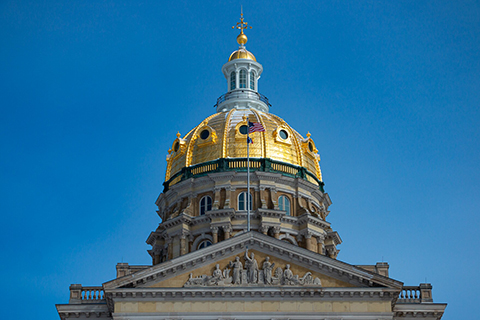By O. Kay Henderson (Radio Iowa)
Republicans in the state legislature say they will soon send the governor a bill to increase general state spending on Iowa’s public schools by about $106 million.
“A very solid number to be able to show support for our public school systems and try to get that done within the timeline,” House Speaker Pat Grassley told reporters today.
He said the House will approve that level of spending early next week — giving school boards about eight weeks to finalize budget plans for the next academic year.
Democrats say school districts need more to offer competitive teacher salaries and cover rising costs of fuel to heat buildings and run buses. Senator Herman Quirmbach of Ames said the state would have more to spend if Republicans hadn’t approved state-funded savings accounts for private school parents.
“We’re proposing to support public education for the many and not private school education for the privileged few,” Quirmbach said.
Due to declining enrollment and the distribution formula for general state spending on public schools, Senator Sarah Trone Garriott of West Des Moines said dozens of school districts will get less money for the next academic year.
“Seventy-one community school districts will absolutely have to cut their budgets, cut teachers, cut programs, increased class sizes,” Trone Garriott said. “Three percent will move more rural schools towards consolidation and closure.”
The 34 Republicans in the Senate approved the 3% increase in general state school aid this afternoon.
“I’ll start with the word conservative, with no apology,” Senator Ken Rozenboom, a Republican from Oskaloosa, said. “We have conservative budgeting practices and Iowans, in increasing numbers, sent us back to the House and Senate so yes, this reflects our fiscal policies and our conservatism.”
The bill also includes $900,000 more dollars in state support for geographically large school districts that spend far more on bus routes.




